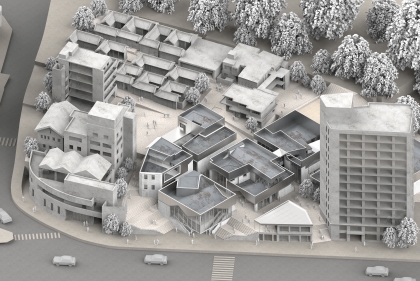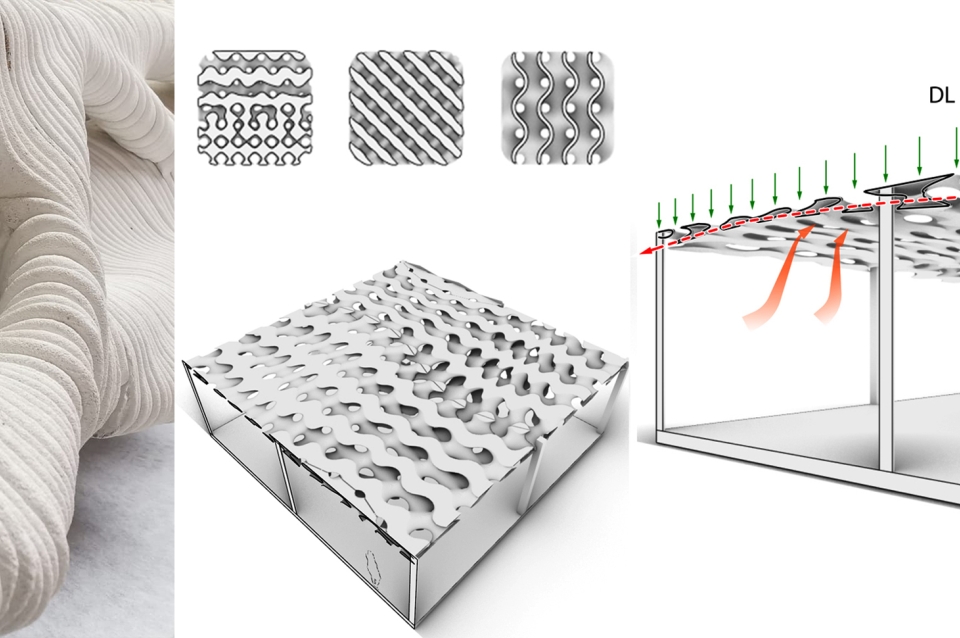June 17, 2022
Stuart Weitzman School of Design
102 Meyerson Hall
210 South 34th Street
Philadelphia, PA 19104
Get the latest Weitzman news in your Inbox
Media Contact
Michael Grant
mrgrant@design.upenn.edu
215.898.2539
The University of Pennsylvania has been selected to receive $2.4M in funding from the US Department of Energy Advanced Research Projects Agency-Energy (ARPA-E). The funding is part of the ARPA-E HESTIA program, which prioritizes overcoming barriers associated with carbon-storing buildings, including scarce, expensive and geographically limited building materials. The goal of the HESTIA program is to increase the total amount of carbon stored in buildings to create carbon sinks, which absorb more carbon from the atmosphere than released during the construction process.
The University of Pennsylvania, in collaboration with Texas A&M University, The City College of New York, KieranTimberlake, and Sika, will design carbon-negative, medium-sized building structures by developing a high-performance structural system for carbon absorption and storage over buildings’ lifespan.
“We’re taking a multi-scalar approach to minimize the impact of using concrete, which is the most ubiquitous construction material globally,” said Masoud Akbarzadeh, director of the Polyhedral Structures Laboratory and assistant professor of architecture, Weitzman School of Design at Penn. “While on the macro level, we are introducing an innovative, efficient structural system, on the micro level, we are re-inventing the recipe for concrete to absorb carbon. The results of this research could be applied to a comprehensive building design strategy for all kinds of buildings.”
The team will use a novel carbon-absorbing concrete mixture as a building material, and design and assemble a high-performance structural system with minimized mass and construction waste, and maximized surface area. The parts will be prefabricated using robotic 3D printing technology.
“Geometry is what makes our team’s designs unique, in both the printed structures and the formulation of the carbon-absorbing concrete. By also using bio-based materials, our structures will not only store carbon, but offer enhanced load-bearing capabilities,” said Shu Yang, chair of Materials Science and Engineering Department, School of Engineering and Applied Science at Penn.
“The right geometry produces the efficiency of the structures by reducing the amount of material—concrete, in this case—used, and consequently carbon emissions. Coupling the right form of structure and material will also help to absorb more carbon from the atmosphere,” said Mohammad Bolhassani, director of Advanced Masonry Center at The Bernard & Anne Spitzer School of Architecture, The City College of New York.
The research bridges active and passive design approaches to thermal performance.
The increased surface area of the novel concrete structure is beneficial for achieving comfort temperature ranges indoors through thermal mass heat storage. “We will combine natural ventilation strategies with the exposed concrete slab system to achieve a major reduction in the operational energy of the building over the building's life cycle,” said Dorit Aviv, director of the Thermal Architecture Lab, Weitzman School of Design, University of Pennsylvania.
“The novel construction system will combine strategies to exploit thermal mass with adaptive envelope, and electrified building systems including heat pumps, to reduce operational carbon emission over the building’s life cycle,” said Zheng O’Neill, associate professor of mechanical engineering, J. Mike Walker ’66 Department of Mechanical Engineering at Texas A&M University.
A Building Information Modeling (BIM)-integrated life cycle analysis (LCA) feedback loop will be used to identify the combined strategies to ensure carbon negativity on a cradle-to-gate and cradle-to-grave basis. “Our transdisciplinary team will engage the development of materials and systems holistically, developing LCA workflows to understand how components of the building contribute collectively to carbon negative design,” said Billie Faircloth, partner and research director at KieranTimberlake.
The project team includes: Masoud Akbarzadeh (PI), director of the Polyhedral Structures Laboratory and assistant professor of architecture, University of Pennsylvania; Dorit Aviv (co-PI), director of the Thermal Architecture Lab and assistant professor of architecture, University of Pennsylvania; Shu Yang (co-PI), Joseph Bordogna Professor of Engineering and Applied Science and chair of the Department of Materials Science and Engineering, University of Pennsylvania; Peter Psarras, research assistant professor in chemical and biomolecular engineering, University of Pennsylvania; Zheng O’Neil (co-PI), associate professor of mechanical engineering, Texas A&M University; Mohammad Bolhassani (co-PI), assistant professor, The City College of New York; Billie Faircloth (co-PI), partner and research director, KieranTimberlake, and Ryan Welch, principal, KieranTimberlake; Didier Lootens, head of research and development, Sika Switzerland.


 Expand Image
Expand Image



